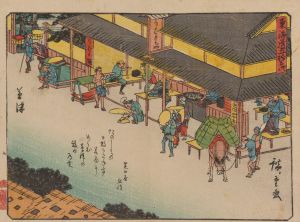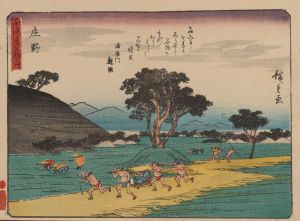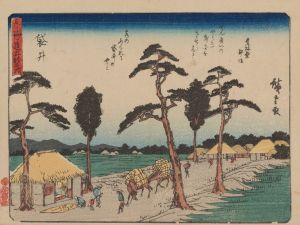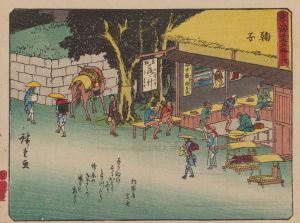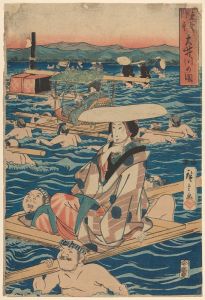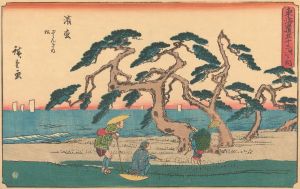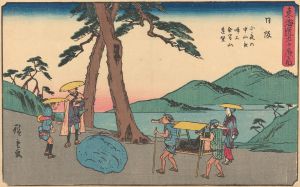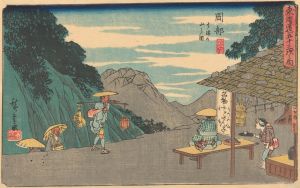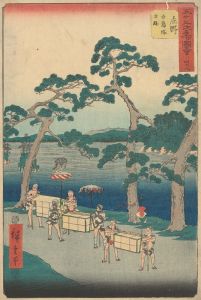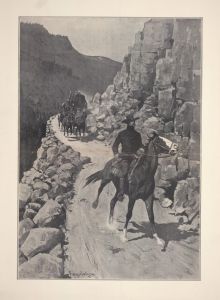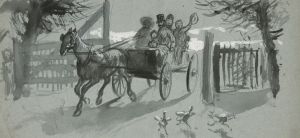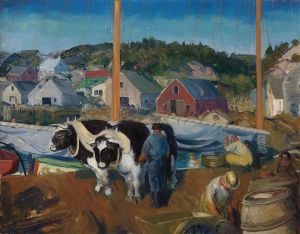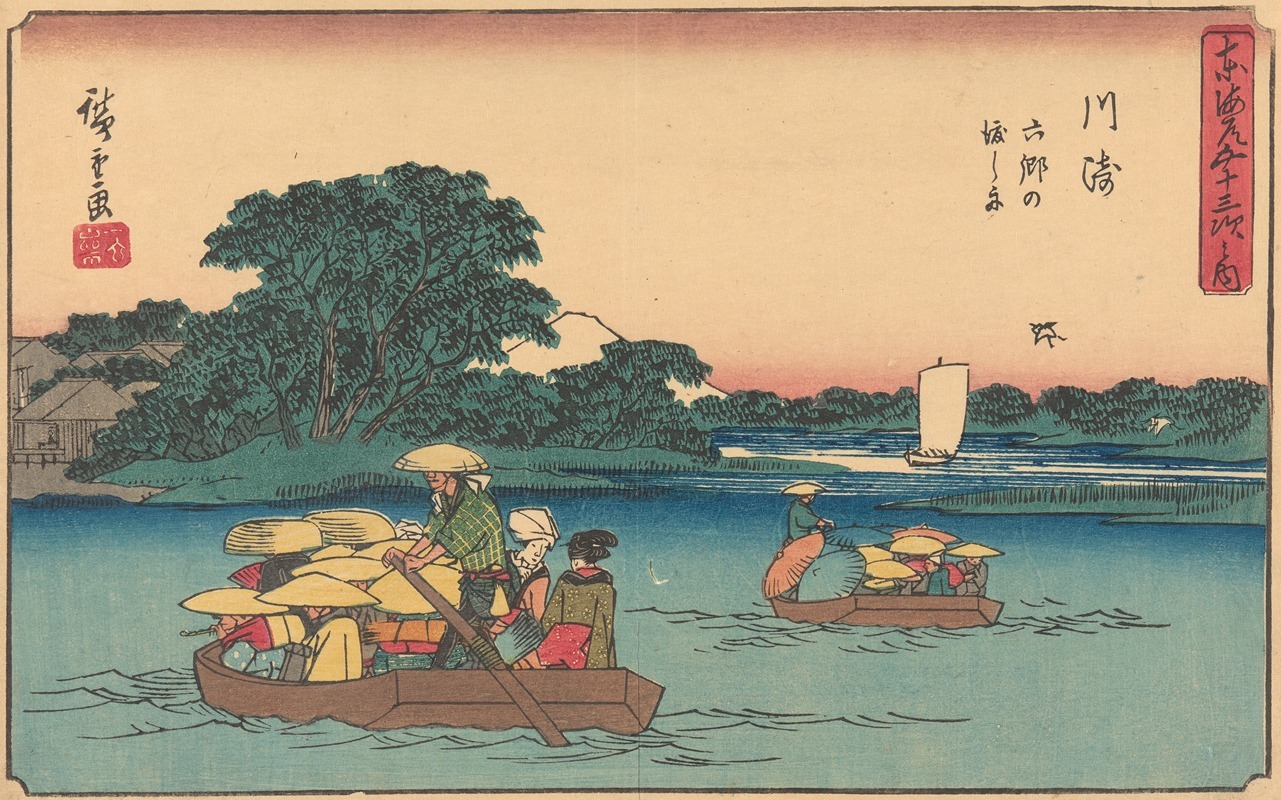
Kawasaki
A hand-painted replica of Andō Hiroshige’s masterpiece Kawasaki, meticulously crafted by professional artists to capture the true essence of the original. Each piece is created with museum-quality canvas and rare mineral pigments, carefully painted by experienced artists with delicate brushstrokes and rich, layered colors to perfectly recreate the texture of the original artwork. Unlike machine-printed reproductions, this hand-painted version brings the painting to life, infused with the artist’s emotions and skill in every stroke. Whether for personal collection or home decoration, it instantly elevates the artistic atmosphere of any space.
Andō Hiroshige, a renowned Japanese ukiyo-e artist of the Edo period, is celebrated for his landscape prints and depictions of everyday life in Japan. One of his notable works is "Kawasaki," which is part of the series "The Fifty-three Stations of the Tōkaidō" (Tōkaidō Gojūsan-tsugi no Uchi). This series, created in the early 1830s, is among Hiroshige's most famous works and captures the scenic beauty and cultural significance of the Tōkaidō road, a vital route connecting Edo (modern-day Tokyo) to Kyoto.
The "Kawasaki" print is the third station in the series and depicts the Kawasaki-juku, a post town located along the Tōkaidō. This station was an essential stop for travelers, offering rest and provisions. Hiroshige's portrayal of Kawasaki captures the essence of travel during the Edo period, highlighting the interactions between people and the natural environment.
In the "Kawasaki" print, Hiroshige illustrates a ferry crossing over the Tama River, which was a significant feature of the Kawasaki station. The ferry was a crucial mode of transportation for travelers and goods, as there was no bridge over the river at that time. Hiroshige's composition skillfully balances the human activity with the surrounding landscape, showcasing his ability to convey movement and atmosphere. The print features passengers on the ferry, including travelers and locals, set against a backdrop of the river and distant hills. The use of color and line work in the print exemplifies Hiroshige's mastery in creating depth and perspective, drawing the viewer into the scene.
Hiroshige's work is characterized by its attention to detail and ability to evoke the mood of a particular moment. In "Kawasaki," he captures the bustling yet serene atmosphere of the ferry crossing, reflecting the daily life and travel experiences of people during the Edo period. The print is also notable for its depiction of the changing seasons, a common theme in Hiroshige's work. The subtle use of color suggests a particular time of day or season, adding to the narrative quality of the scene.
"The Fifty-three Stations of the Tōkaidō" series, including the "Kawasaki" print, played a significant role in popularizing the Tōkaidō road and its post stations. Hiroshige's work provided a visual record of the journey, offering insights into the cultural and social aspects of travel in Japan during the 19th century. The series was widely appreciated not only for its artistic merit but also for its documentation of the landscapes and customs of the time.
Hiroshige's influence extended beyond Japan, impacting Western artists such as Vincent van Gogh and Claude Monet, who admired his compositions and use of color. Today, Hiroshige's prints, including "Kawasaki," are celebrated for their artistic and historical significance, offering a glimpse into the Edo period's travel culture and the enduring beauty of Japan's landscapes.





